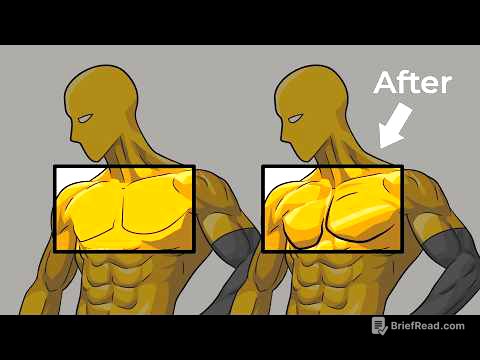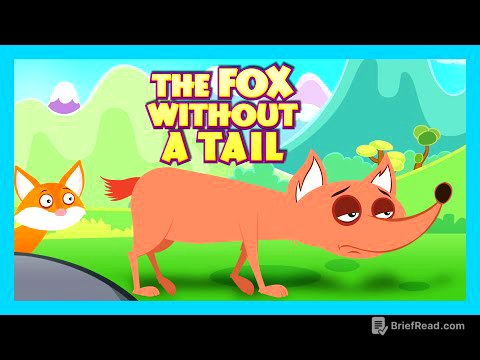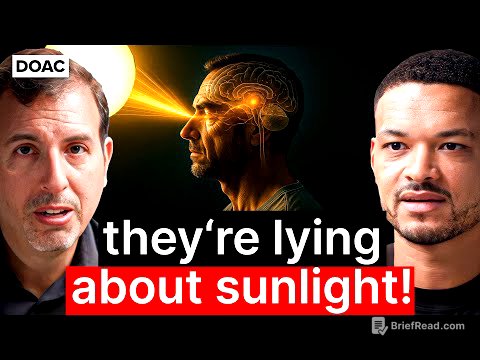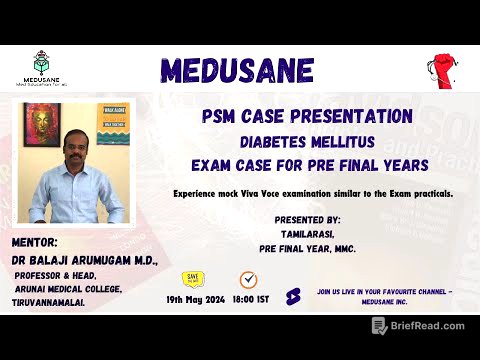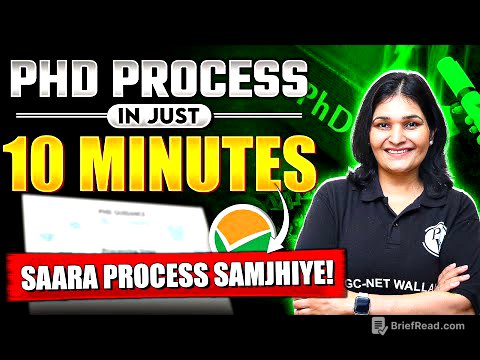TLDR;
This video explores two contrasting approaches to movement: energy-depleting exercises that can lead to soreness, and energy-recharging somatic movements that promote well-being without causing pain. It challenges the traditional fitness mindset focused on isolated muscle work and correct body positioning, advocating instead for a holistic approach that considers the body's interconnectedness through fascia. The video introduces fascial unwinding, an intuitive process where the body spontaneously moves to release stress and revitalize itself, emphasizing spiral movements and the body's natural design. It suggests shifting from linear, voluntary movements to effortless, internally-driven movements that store energy, absorb shock, and support overall health, particularly during midlife, menopause, and for those concerned about osteoporosis.
- Traditional exercise can deplete energy and cause soreness.
- Somatic movement recharges energy and avoids soreness.
- Fascia plays a key role in sensory perception and natural movement.
- Fascial unwinding is an intuitive process for stress release and revitalization.
- Spiral movement aligns with the body's natural design.
- Effortless movement stores energy and improves shock absorption.
Introduction: Should You Feel Sore After Exercise? [0:00]
The video introduces two types of movement: one that depletes energy and causes soreness, and another that recharges energy without soreness. The speaker shares her background as a fitness professional who enjoyed traditional gym workouts and the feeling of soreness afterwards. She then suggests a different approach where the body shouldn't feel sore unless you're an athlete in training. The goal is to shift from focusing on "fitness" to a sense of "wholeness," implying a more integrated and gentle way of moving.
Why Soreness Isn’t Always Necessary [0:50]
The speaker emphasizes that feeling sore after exercise isn't always necessary, especially for those seeking overall well-being rather than athletic performance. She contrasts energy-depleting movements with gentle, effortless movements like bouncing or hopping, highlighting that these lighter movements shouldn't cause strain or soreness. This sets the stage for exploring a different way of understanding and moving the body.
Energy-Depleting vs. Energy-Recharging Movement [1:44]
The video contrasts energy-depleting exercises with energy-recharging movements, explaining that traditional exercise is often based on an outdated understanding of anatomy that views the body as separate parts. This approach focuses on strengthening individual muscles in isolation. In contrast, energy-recharging movements are effortless and don't cause strain.
Rethinking Exercise: From “Fitness” to “Wholeness” [2:24]
Moving your body is essential, but approaching it as a mechanical system using "exercise" to strengthen it in a particular way overlooks the whole person. This means not considering stress levels or what the body truly needs. Traditional approaches often involve stretching for flexibility and strength training for specific muscle use. The speaker advocates for a shift from "fitness" to "wholeness," considering the body's interconnected systems and individual needs.
The Role of Fascia in Movement [3:29]
The speaker discusses the importance of fascia, a sensory network throughout the body, and how understanding it can unlock natural movement blueprints. Fascia isn't just about shaping the body; it's like a sixth sense. Traditional movement approaches often focus on correct body alignment and positioning, which involves teaching voluntary movements.
Somatic Movement Explained [4:28]
Somatic movement differs from traditional methods because it doesn't require guiding someone into a particular movement or specific techniques like yoga or Pilates. Instead, it involves tuning into the body's fascia and allowing movement to arise from within, enabling the body to take care of itself. This movement originates from the inside out.
Fascial Unwinding: How Movement Emerges Naturally [5:03]
Fascial unwinding is how the body moves to revitalize itself and release stress or trauma patterns. By coming to a restful state, the body can spontaneously move in ways that promote healing. This intuitive process allows the body to address its needs naturally.
Spiral Movement & Our Natural Design [5:40]
The body is designed to move in a spiral way, not linearly. Staying in linear patterns, like on a yoga mat, can limit movement. Voluntary movement involves telling the body what to do, which changes the energetic pathways and activates the sympathetic nervous system, depleting energy.
Why Linear, Voluntary Movement Drains Energy [6:05]
Linear, voluntary movement drains energy because it engages the sympathetic nervous system, leading to an activation response. Activities like burpees can quickly lead to fatigue and tightness. The speaker shares her personal experience of stopping traditional exercise about 15-20 years ago because it didn't feel right anymore.
My Shift Away from Traditional Exercise [6:43]
The speaker shifted away from traditional exercise after realizing the body is already designed to move naturally. She was guided to a somatic movement practice to understand fascia, which is a continuous web without separations. Muscle cells and nerve cells are shaped by fascia, highlighting the body's interconnectedness.
Effortless Movement for Tone & Energy Storage [9:17]
The body recharges and takes care of itself through intuitive movement, eliminating the need for specific exercises for different body parts. This process emerges naturally, providing tone and allowing the body to store energy. It also improves the body's ability to absorb shock.
The Power of Fascia: Absorbing Shock and Nourishing the Body [9:46]
Fascia enables energy storage and shock absorption through specific movements, making movement feel effortless and holistic. It regulates the nervous system and addresses the body as a whole.
Movement for Midlife, Menopause & Osteoporosis [10:28]
These movements are particularly beneficial during midlife and menopause, especially for those concerned about osteoporosis.
Next Steps: Free Resources & Continuing Your Journey [11:01]
For those interested in starting this journey, the speaker offers free sessions and videos. She also mentions a program called "In Tune" that guides individuals in understanding and befriending themselves, managing stress and anxiety, and using movement for self-care. This movement approach takes care of the individual as a whole.

